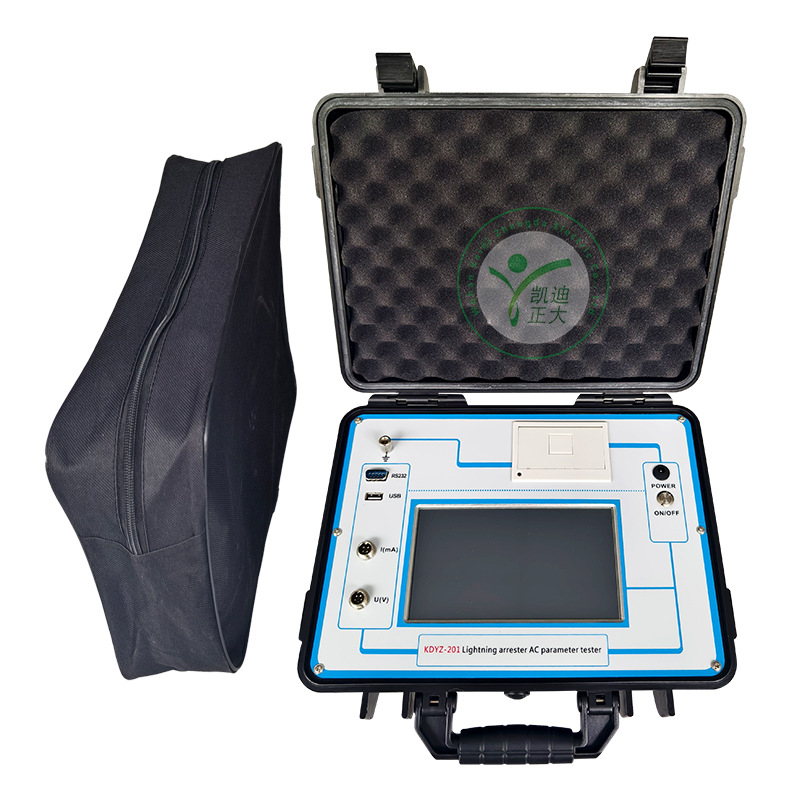
23 Aug-2024
KDYZ-201 Zinc Oxide Surge Arrester Tester is a specialized instrument used to test the electrical performance of zinc oxide surge arresters. This instrument is suitable for live or power-off detection of various voltage levels of zinc oxide surge arresters, so as to timely detect dangerous defects such as insulation moisture and valve plate aging inside the equipment.
Precautions for Zinc Oxide Surge Arrester Tester
1. Before conducting the test, confirm that the zinc oxide lightning arrester has been disconnected from the power supply and is in a safe state:
2. It is strictly prohibited to touch the internal components of the tester during the testing process to avoid accidents such as electric shock;
3. When using the tester, strictly follow the operating procedures to avoid equipment failure caused by misoperation;
4. During the testing process, avoid contact between the lightning arrester and other metal objects to prevent risks such as short circuits;
Technical specifications of zinc oxide lightning arrester tester
1. Working power supply: AC220V/50Hz;
2. Measurement range: Leakage current: 0-10mA (expandable); Voltage: 30-100V (expandable).
3. Measurement accuracy:
Current: Full current>100 μ A, ± 5% reading ± 1 word;
Voltage: When the reference voltage signal is greater than 30V, ± 2% reading ± 1 word;
4. Measurement parameters:
Leakage current full current waveform, fundamental effective value, peak value;
The fundamental effective value and 3rd, 5th, and 7th effective values of the resistive component of leakage current;
Peak value of resistive component of leakage current: positive peak Ir+negative peak Ir -;
Fundamental wave of capacitive current, phase difference between full voltage and full current, effective voltage value, and power consumption of lightning arrester.
measuring principle
After digital filtering of the input current and voltage, the fundamental wave is extracted, and then the peak value of the resistive current fundamental wave Ir1p=Ix1p. cos φ is calculated using projection method. Due to the stability of the fundamental wave value, Ir1p is commonly used to measure the performance of lightning arresters.
The peak value Ix1p of the total current fundamental wave is projected as Ir1p in the direction of the voltage fundamental wave U1 (E1), and as Ic1p in the vertical direction. The phase angle of the current voltage fundamental wave is denoted by. Therefore, both φ and Ir1p can be used to intuitively measure MOA performance.

